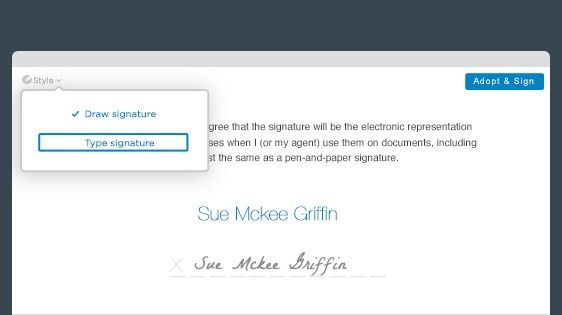Being a freelance web designer can feel like a never-ending packing session for the most exciting trip of your life… especially when you’re just starting out. Who wants to worry about the boring details when all you want is to just do what you looooooove?
I don’t know what to tell you here; this is a stage you simply can’t skip. Deciding on rates, creating your portfolio, and setting up contracts are just the tip of the preparation iceberg, folks… but if you can take care of all that work right at the beginning of your career, you’re going to be able to easily snap your freelancing suitcase shut without having to sit on it or search for a roll of duct tape.
In addition to all of the tangible preparation you’ve got to pay attention to, it’s important to make sure that you’re mentally ready to deal with clients, colleagues, and curious new acquaintances. There are a handful of questions that freelance web designers are sure to be asked, and your ability to answer them quickly and competently will color a potential client’s opinion of your abilities and value.
“How much do you charge?”
This, my friends, is a simple question that may have a complicated answer. The client most likely wants a bottom line, but they need to recognize that a price quote is way more than that. Be thorough when you answer this question. Let them know what your rates are, whether you charge by project or hourly, and make sure to outline the different pieces of your process that they’ll be paying for. Certain steps you’ll need to account for are:
-Size (number of pages, etc…) of the website
-Responsiveness
-Planning and communication
-UX
-Visual design
-Programming
-Content
-Support and documentation
-Testing and launch
“What if I’m not satisfied with your work?”
That can be a little disconcerting to hear, but don’t get too bristly. Treat this question like an opportunity rather than a hypothetical attack.
This is the perfect chance to lay out your needs and expectations as a designer, so that you can eliminate vague instruction and lackluster work. Explain that dissatisfaction is always a possibility regardless of designer, and that you have revision policies in place to encourage satisfaction for all parties involved.
The more detailed you can be when discussing your web design process, the better. Clients don’t like surprises when it comes to their money, and designers don’t like surprises when it comes to their work. Be explicit in your contract about revisions, and impart the importance of specific detail during the planning phase.
“Can I see some of your previous work?”
The answer? Of course.
As a freelance web designer, you need to have a portfolio. A potential client will not be satisfied by your word alone, so having a beautiful and easily-accessible web design portfolio is a must. Be sure to show differing pieces of your best work so that you can display both your skill level and work diversity.
Having a tangible, printed version of your portfolio is also a good idea. By keeping a few of these with you wherever you go, you can increase your effectiveness during in-person networking events or meetings.
“How can I keep track of your progress?”
There are a lot of possible answers here, but the common factor in all of them is open communication. Whether you want to add your client to your project management software, create a shared Google Doc containing a checklist, or simply schedule a weekly phone call, the point is to show your client that your are working diligently, and that you have nothing to hide when it comes to their project.
“How long will this take?”
If you’re just starting out as a freelance web designer, this question might be a little hard to answer, so you should definitely prepare yourself for this doozie.
Let’s start from the beginning. In order to answer those first few questions, you had to come up with a detailed description of your web design process, right? If you’re currently working on a project or two, you need to take that description and start using a time tracker. By timing each designated portion of your process, you’ll be able to create an accurate timeline that you can present to potential clients.
Now, if you don’t have any current projects to time, you’ll have to use a little good, old-fashioned educated guesswork. Look at your process and think about your previous projects. About how long did it take you to work up a wireframe? How much back-and-forth did you go through with your client during the planning/communication phase? How big of an ordeal was the actual launch?
Don’t let impostor syndrome steal your confidence; you’re knowledgeable enough about web design to want to make a career out of it. With the map of your web design process to guide you, a fairly accurate time estimate should not be a problem.
“What sets you apart from your competition?”
The answer to this question should be easy, right? It should be… but sometimes it’s not.
Whether you’re not fully confident in yourself yet, you feel weird about “tooting your own horn,” or you just haven’t really thought about it, you’re selling yourself short if you don’t have an answer.
What do you love about web design? What are you especially good at? Highlight these parts of your work and create a descriptive-but-concise elevator pitch. Use your portfolio to play up these strengths, and don’t be afraid to toot that horn a bit.
Thinking ahead to questions like these can be a little daunting, but at the root of them are these three traits:
Intention, confidence, and honesty.
Be intentional in your process; flying by the seat of your pants is not going to provide you with lasting projects. Be confident in your process and skills; when someone questions your about your services, “Um…” should not be the first thing you say. Be honest with clients; making promises you can’t deliver will only cause dissatisfaction and damage your reputation.
Don’t let the packing stage scare you; you’re going to go on this incredible freelancing trip. Think of your process as your airline ticket, and a portfolio your passport. Without those two things, your trip has a good chance of turning into a twinkie date at a 7-Eleven instead of a pub tour across Ireland.
We like to keep things positive around here, so let’s aim for the pub tour, shall we?


Smash this button if you’re ready to trade administration drudgery for more free-time.



